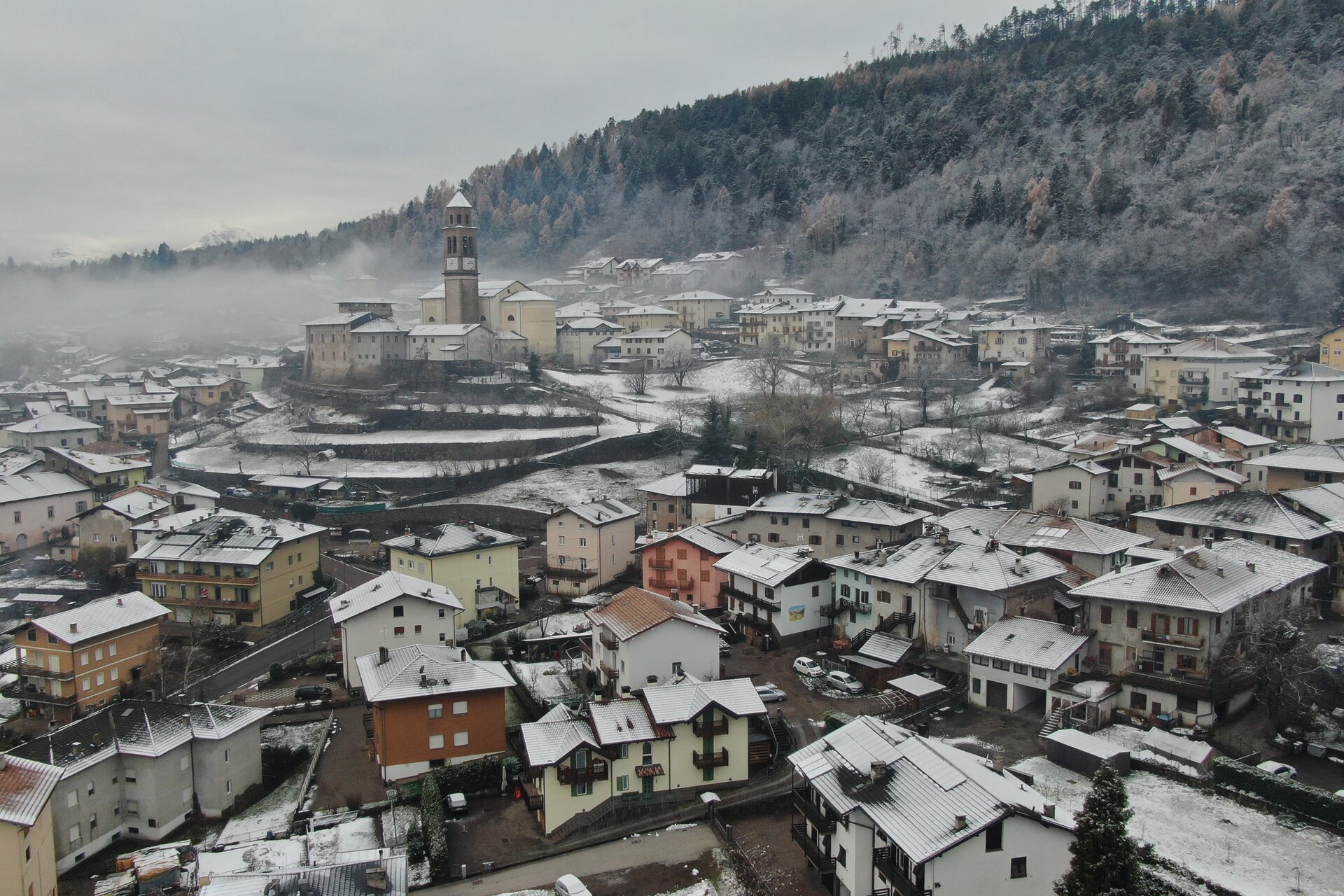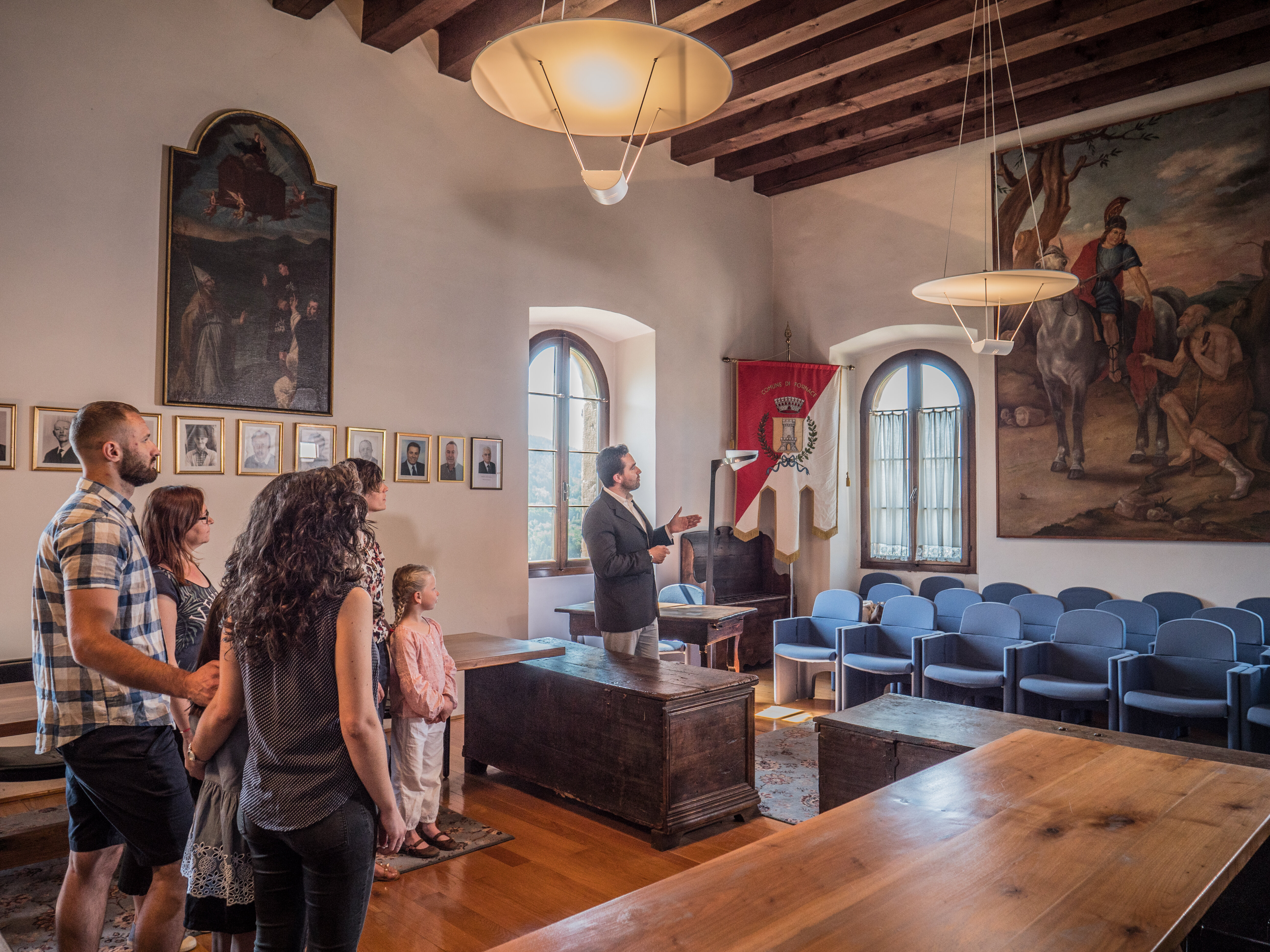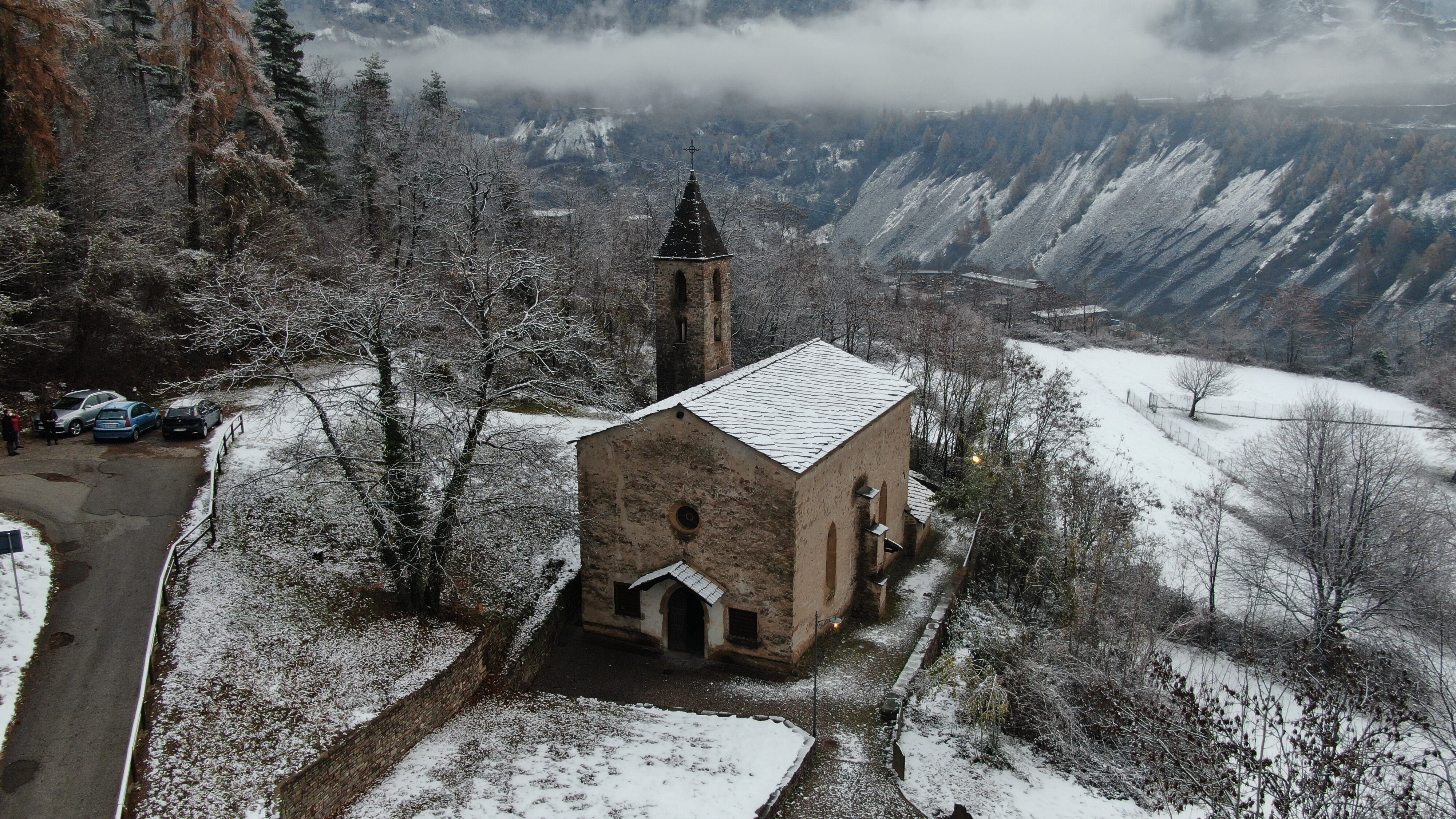Fornace lies on the terraced moraines of the southeastern slope of the Montepiano, at an altitude of 740 meters.
Together with Albiano, Lona-Lases, and San Mauro, it is one of the main centers of porphyry extraction and processing: the quarrying industry represents the principal source of local income.
The area also offers opportunities for pleasant walks and excursions. Among these is the well-known Monte Piano Historical-Cultural Trail, which begins in Piazza del Castello and leads visitors to discover numerous traces of medieval mining activity.
Further information
Fornace appears to have been inhabited since ancient times. The remains found in a Roman burial ground attest that it was certainly a Latin settlement, and it retained importance during the Lombard and Frankish periods.
In 1462, Giacomo di Roccabruna began the construction of the castle, later rebuilt in 1566 by his descendants in Renaissance style. The castle then passed to the noble Gaudenti family and later to the Counts Giovanelli, who sold it to the municipality in 1853.
The history of Fornace is closely tied to the intense silver mining activity on Monte Calisio. It is believed that its name derives from this ancient craft: “Fornas” (“furnaces”) would refer to the smelting furnaces used for silver extraction.
Near the hamlet of San Stefano, standing isolated among the fields, lies the ancient church of the same name. Originally dedicated to Saint Cyprian, bishop of Carthage and martyr, it likely dates back to between the 6th and 7th centuries. The building was rebuilt in the 16th century in a late Gothic style, with a characteristic elevated bell tower featuring Romanesque bifora windows.
Inside are remarkable frescoes, including Gothic net vault decorations and the remains of an ancient tomb. From this church comes the famous late-Gothic triptych, the Altar of Saint Dominic, now preserved in the Tridentine Diocesan Museum.
In the center of Fornace rise the Church of San Martino and Fornace Castle. The church, mentioned as early as 1160, underwent renovations in the 16th century and again between the late 19th and early 20th centuries. Next to it stands the southeast wing of the castle, medieval in origin but with visible Renaissance architectural elements.



